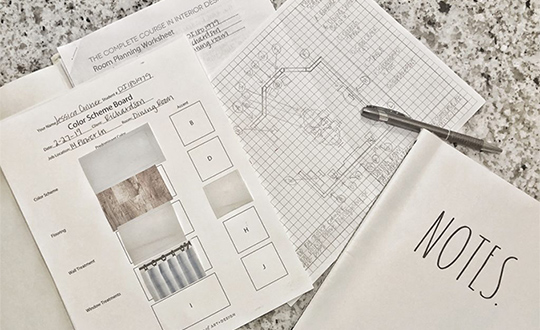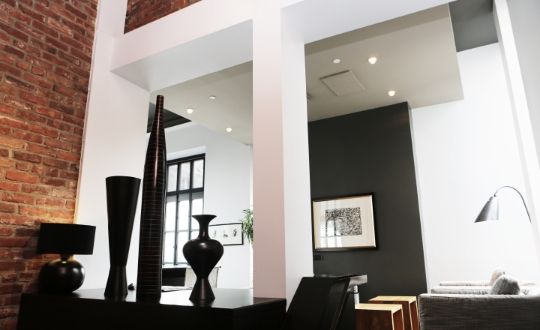Fabulous design. Cutting edge looks. Interesting twists in color, fabric, and texture. These are all elements inherent in design that's ecologically sound. Yes, your creativity can have free reign even as you make choices that help protect the planet. Increasingly, manufacturers are creating products that have minimal impact on the environment, whether because they're made from organically-grown cotton or because they're made with renewable resources. We think environmentally friendly design is so important that we recently added a Green Design lesson to the NYIAD Complete Course in Interior Design.
In our "Decorating Green" column we'll look at a sustainable, low-impact element of design in each issue of "Designer Monthly." We hope these articles will help us all help the planet and the many creatures that share it with us.
Bringing Green Inside
In the dead of winter, there is one thing we all crave: a simple touch of nature. Against a white backdrop, the smallest sprig of leafy green can immeasurably lift the spirits and transport us to a different place and time. It’s no wonder, then, that the practices of crafting terrariums are alive and well in their modern renaissance – and with environmentally-friendly updates as well.
First created (accidentally) by Nathaniel Ward in the mid-1800s, terrariums became incredibly popular in the Victorian era as an opportunity for folly, experimentation, craft, and art. Ward’s original terrariums were closed ecological systems, enlivened with constant cycles of evaporation and watering. The delicate balance of the closed system was suited to the delicate design of Wardian terrarium cases, which look like glass-enclosed birdhouses.
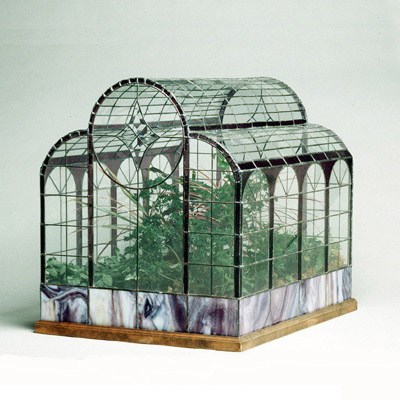
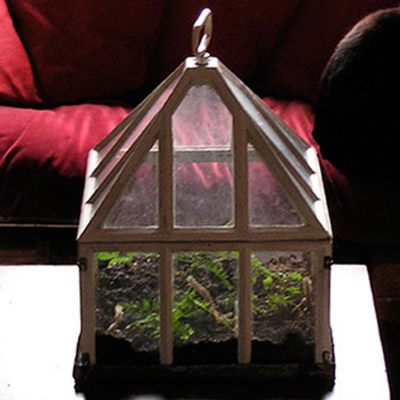
Terrariums fell out of fashion for many years but have made a serious comeback with a modern twist. Wardian cases are still available, but the hallmarks of contemporary terrarium making are two-fold, and relate entirely to the vessel. Firstly, the vessel’s form is often softer, more liquid, and more organic than those boxes of yore.
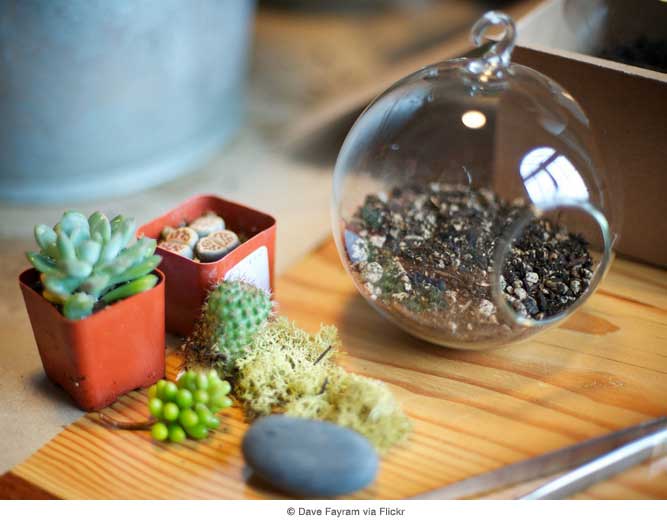
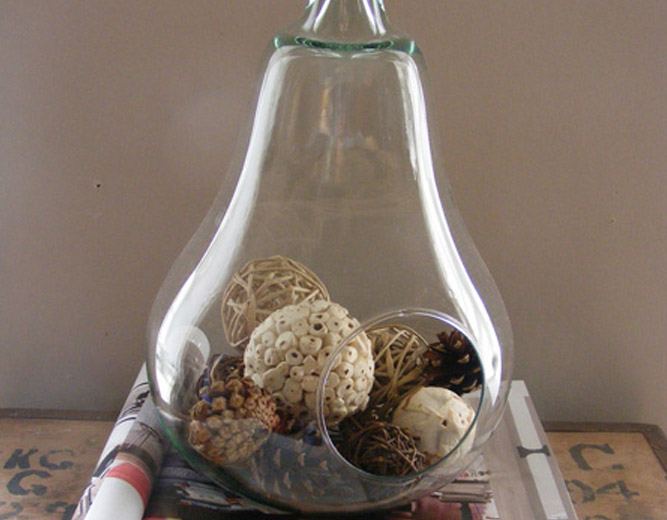
But secondly, and perhaps more valuably, the vessels used for modern terrariums are often “found” or recycled objects.
Twig Terrariums, founded by a pair of very smiley ladies in Brooklyn, is an enormously popular terrarium company that sells both finished terrariums and DIY kits. Twig’s pieces are unique in that they utilize the classic combination of moss, rocks, and soil, but the artists also add tiny figurines to create a vignette within the glass. As they say, many of their creations are in “antique, vintage…[or] any odd glass objects we find on our travels. “ Co-owner Katy Maslow was handcrafting terrariums at a recent holiday market into everything from old stopper bottles to de-filamented light bulbs.
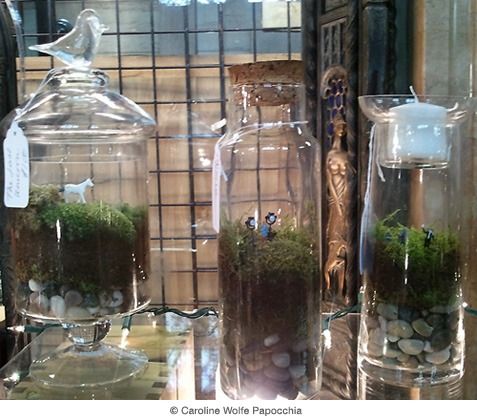
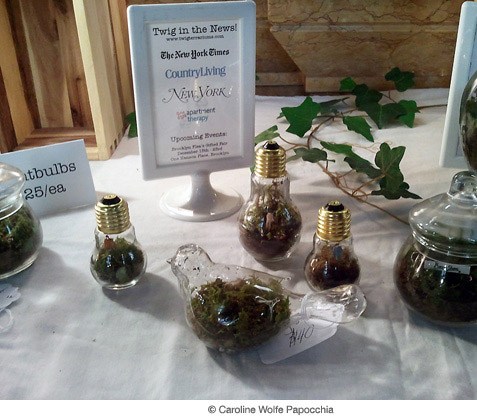
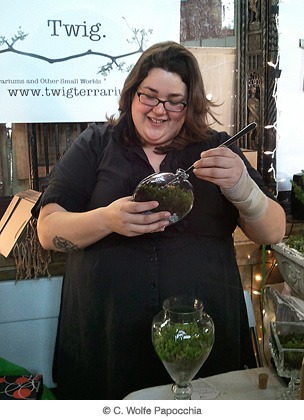
The popularity of terrariums has also spawned a DIY approach, and homemade terrariums also carry the environmentally-friendly mantle of reuse – specifically, made in jam and other lidded jars.
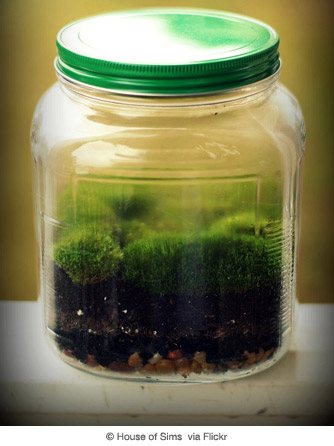
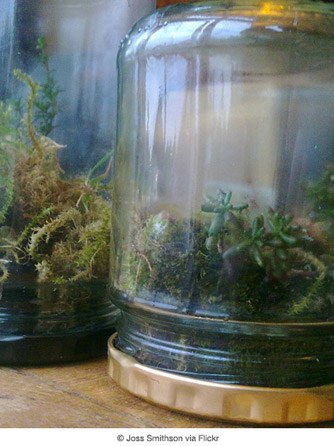
Terrariums fulfill a selfish quest by allowing us to bring a delicate piece of nature indoors and nurture it. In February, they provide a reprieve from the visceral shock and boredom of winter, while also acting as a functional art piece by oxygenating our air – and looking good too. And whether stuffed with moss, succulents, or sedum, these modern terrariums could not be more “green” – they are repurposing old vessels AND filling them with thriving life.


